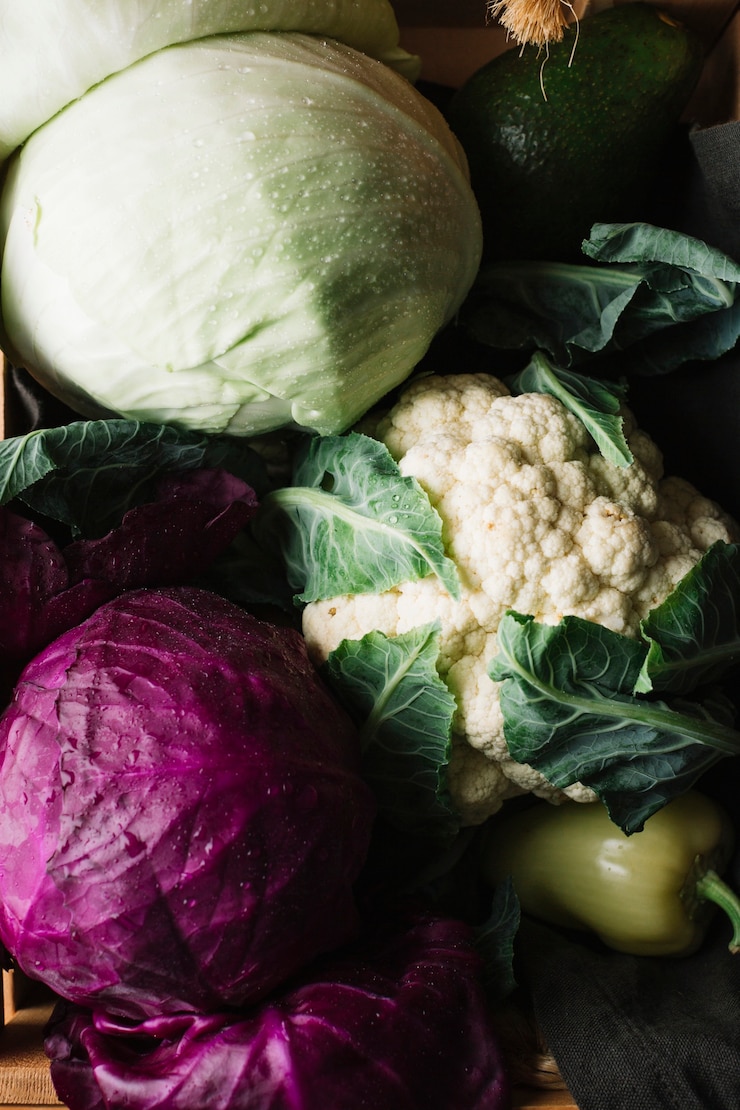
Summer is in full swing, and I’m excited to share one of my favorite Farmer’s Market finds: cruciferous vegetables! These nutritious veggies range from familiar favorites like cauliflower and broccoli to more unique options like watercress, wasabi, and mustard greens.
In this post, I’ll break down everything you need to know about cruciferous vegetables, including their definition, five major health benefits, and how much you should eat daily. Plus, I’ve included links to my favorite recipes so you can enjoy these veggies in various delicious ways!
### What Are Cruciferous Vegetables?
Cruciferous veggies belong to the Brassica family and include tasty plants with four-petaled flowers resembling a cross—hence the name “cruciferous.” They are packed with essential vitamins and minerals like folate, vitamins E, C, & K, calcium, potassium, and magnesium. Additionally, they’re rich in fiber and antioxidants, including glucosinolates, which contribute to their distinctive taste and numerous health benefits.
This family offers a wide array of options, so if you’re not fond of radishes, you might prefer broccoli or Brussels sprouts. With so many choices, you’re bound to find some you love! My Broccoli & Cranberry Summer Salad has even converted broccoli skeptics!
### Top Health Benefits of Cruciferous Vegetables
Let’s dig into the specific benefits these veggies offer when added regularly to your diet:
1. **Anti-Inflammatory Powerhouses**
Cruciferous vegetables are rich in anti-inflammatory antioxidants. Diverse veggies contain various antioxidants and phytonutrients, including sulforaphane (great for liver detox), lutein (beneficial for eye health), and zeaxanthin.
2. **Support Liver Health**
Sulforaphane not only protects cells from oxidative stress but also supports liver health! Studies show broccoli sprouts can enhance liver function. You can nourish your liver with my Kale Salad with Creamy Dressing.
3. **Anti-Cancer Properties**
While no single food can prevent cancer, eating cruciferous veggies can help reduce risk. Compounds like indoles, nitriles, thiocyanates, and isothiocyanates show promise in cancer prevention. Try my savory Cauliflower Hummus for a healthy boost.
4. **High in Fiber**
Fiber, though underrated, is crucial for digestion and microbiome health. These veggies are low in simple carbs yet high in complex carbohydrates and fibers, making them gut-friendly. If you’re new to a high-fiber diet, start with small servings. Try my Almond and Cauliflower Chilled Soup to stay cool and nourished.
5. **Nutrient-Dense**
Each serving of cruciferous veggies is packed with vitamins, minerals, and antioxidants. They’re particularly high in vitamin K, essential for bone health and blood clotting. Pair them with healthy fats to absorb fat-soluble vitamins better, like in my Kale & Sundried Tomato Rustic Galette.
### How Much Should You Eat?
Women should aim for about 2.5 cups and men about 3 cups of these nutrient-rich veggies daily. Note that with leafy greens like arugula or watercress, 2 cups of loosely packed greens count as 1 cup due to their lighter density compared to broccoli or Brussels sprouts.
You can easily meet your daily goal with a Broccoli Sweet Potato Feta Frittata for breakfast, Creamy & Dreamy Kale Salad for lunch, and Cauliflower Tacos with Mango Red Pepper Salsa for dinner!
For more recipe inspiration featuring cruciferous veggies, just search my blog for your favorite options. Enjoy munching on these incredible vegetables all summer long!
Xo Joy


